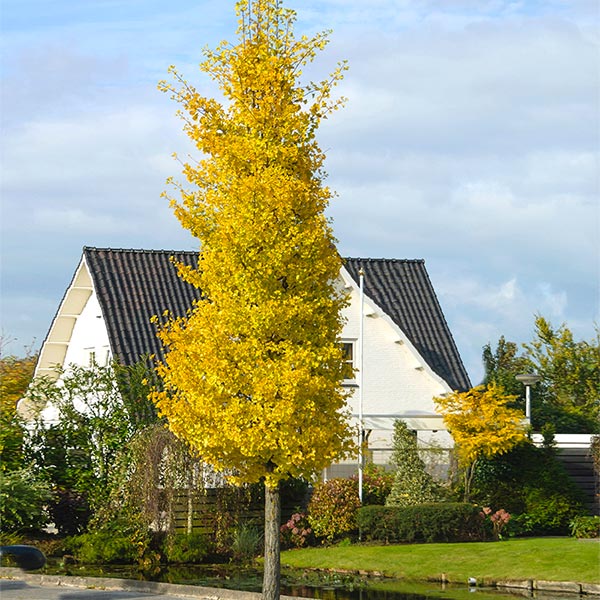Upright, Narrow Ginkgo + Golden Fall Color
Why Princeton Sentry™ Columnar Ginkgo Trees?
Merging the effortless durability and longevity of a classic Ginkgo with a new, upright form, the Princeton Sentry™ Columnar Ginkgo is perfect for those who love the look of a timeless shade tree but don't have much space in their landscape.
And its eye-catching, golden-yellow fall foliage can't be beaten. Despite its slow growth and ability to acclimate well to tighter spaces, it delivers a huge amount of color that's hard to find from other varieties. Plus, because it's virtually pest- and disease-free, you won't have to bother with harsh chemicals or sprays...simply plant your Princeton Sentry™ and forget it.
It's even drought tolerant once established and tolerates poor soil conditions. That means there's no guesswork in growing...whether you live in a climate that sees frigid temperatures down to -40 degrees or some parts of the south.
Why Fast-Growing-Trees.com is Better
But the best part about your Princeton Sentry™ Columnar Ginkgo Tree goes beyond its good looks. For starters, this tree is specifically chosen, hand-selected by horticulturists and experts…so it’s a proven performer.
Plus, because it’s planted, monitored, and shipped with care, roots intact, you reap the rewards of our hard work.
No green thumb is no problem when it comes to your Princeton Sentry™ Columnar Ginkgo Tree. Order yours today...before it's gone!
Planting & Care
1. Planting: When it’s time to plant, choose an area with at least 4 to 6 hours of sunlight per day and well-drained soil. Dig a hole that’s at least two to three times wider than your Ginkgo’s root ball. After placing your tree, backfill its soil, tamp down to avoid air pockets, and lastly, water to help establish its roots.
2. Watering: It is moderately drought tolerant, but your Princeton Sentry™ Columnar Ginkgo Tree needs regular watering during the first few growing seasons for establishment. Typically, you should water your tree thoroughly about once a week. If you’re not sure when to water, simply check the surrounding soil, down to around 2 or 3 inches. If the soil is dry, it’s time to water.
3. Pruning: Excessive pruning is not needed, but we recommend removing dead or damaged branches. Any pruning should also be completed during the winter season or during dormancy.





Comment